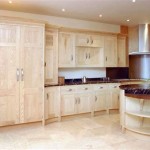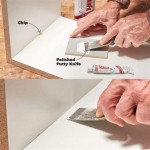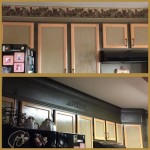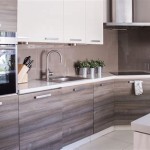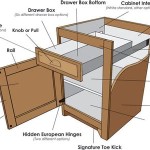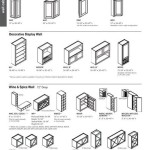How to Get Rid of Scratches on Kitchen Cabinets
Kitchen cabinets, being a focal point and a high-use area in any home, are susceptible to scratches. These blemishes, ranging from superficial to deep, can detract from the overall aesthetics of the kitchen. Understanding the different types of scratches, the materials your cabinets are made of, and the appropriate repair techniques is crucial for effectively restoring their appearance. This article provides a comprehensive guide to identifying, assessing, and addressing scratches on various types of kitchen cabinets.
The first step in scratch removal is determining the type and severity of the damage. Scratches can generally be categorized as surface scratches, shallow scratches, and deep scratches. Surface scratches are typically confined to the finish or top coat of the cabinet and are often caused by light abrasion. Shallow scratches penetrate the finish but do not reach the underlying wood or material. Deep scratches, on the other hand, extend through the finish and into the core material of the cabinet.
Identifying the material composition of the cabinets is equally important. Kitchen cabinets are commonly constructed from wood (solid wood or wood veneer), laminate, melamine, or painted surfaces. Each material requires specific cleaning agents and repair methods to avoid further damage. Applying the wrong technique or product can exacerbate the problem, leading to discoloration, warping, or peeling.
Before commencing any repair work, it is advisable to clean the affected area thoroughly. Use a mild detergent and a soft cloth to remove any dirt, grease, or residue. Once clean, dry the area completely before proceeding with scratch removal. This ensures that any repair materials adhere properly and that the true extent of the damage is visible.
Addressing Surface Scratches
Surface scratches are often the easiest to remedy. Several household products can effectively minimize or eliminate these minor imperfections. One common method involves using a scratch concealer pen or a furniture polish specifically designed for concealing surface scratches. These products typically contain pigments and waxes that fill in the scratch and blend it with the surrounding finish.
To use a scratch concealer pen, select a color that closely matches the cabinet finish. Apply the pen directly to the scratch, following the grain of the wood if applicable. Allow the concealer to dry for the recommended time, typically a few minutes, and then buff the area gently with a soft cloth. Repeat the process if necessary to achieve the desired result. Furniture polish can be applied directly to the scratch and buffed in a circular motion using a soft cloth. The polish will help to fill in the scratch and restore the shine to the surrounding finish.
Another effective method for addressing surface scratches involves using a solution of equal parts olive oil and vinegar. The olive oil acts as a lubricant and helps to moisturize the wood, while the vinegar acts as a mild abrasive and helps to remove any surface residue. Apply the solution to the scratch using a soft cloth and rub gently in a circular motion. Allow the solution to sit for a few minutes, then wipe away any excess with a clean cloth. This method is particularly effective for restoring the shine and luster to wooden cabinets.
For cabinets with a glossy finish, a car wax or polish can sometimes be used to remove surface scratches. Apply a small amount of wax or polish to a soft cloth and rub gently over the scratch in a circular motion. Buff the area until the scratch is no longer visible. This method works best on scratches that are very shallow and only affect the top layer of the finish.
Repairing Shallow Scratches
Shallow scratches, which penetrate the finish but do not reach the underlying material, require a slightly more involved repair process. One effective method involves using a wood stain marker or touch-up marker that matches the color of the cabinet finish. These markers contain pigmented dyes that can be used to fill in the scratch and blend it with the surrounding area.
To use a wood stain marker, select a color that closely matches the cabinet finish. Apply the marker to the scratch, following the grain of the wood if applicable. Allow the stain to dry for the recommended time, typically a few minutes, and then wipe away any excess with a clean cloth. If the scratch is still visible, repeat the process until it is sufficiently concealed. It is important to apply the stain in thin, even layers to avoid creating a dark spot.
Another option for repairing shallow scratches is to use a furniture repair crayon or wax stick. These products are available in a variety of colors and can be used to fill in scratches and chips in wood furniture. To use a furniture repair crayon, select a color that closely matches the cabinet finish. Rub the crayon over the scratch, applying enough pressure to fill the scratch with the wax. Use a plastic scraper or credit card to remove any excess wax and smooth the surface. Buff the area with a soft cloth to blend the repair with the surrounding finish.
For painted cabinets, a touch-up paint that matches the original color can be used to repair shallow scratches. Apply a small amount of paint to a fine-tipped artist's brush and carefully fill in the scratch. Allow the paint to dry completely before applying a second coat if necessary. Once the paint is dry, sand the area lightly with fine-grit sandpaper to smooth the surface and blend the repair with the surrounding finish. Consider applying a clear coat of varnish or polyurethane to protect the repair and match the sheen of the original finish.
In some cases, a wood filler can be used to repair shallow scratches, particularly if the edges of the scratch are chipped or uneven. Apply a small amount of wood filler to the scratch using a putty knife, making sure to fill the scratch completely. Allow the wood filler to dry according to the manufacturer's instructions. Once the filler is dry, sand the area smooth with fine-grit sandpaper and apply a touch-up paint or stain to match the cabinet finish.
Dealing with Deep Scratches
Deep scratches, which penetrate the finish and reach the underlying material, require more extensive repair techniques. One common method involves using a wood filler, stain, and clear coat to disguise the damage. This process involves several steps and requires some skill and patience.
Begin by cleaning the scratch thoroughly and removing any loose debris. Apply wood filler to the scratch using a putty knife, ensuring that the scratch is completely filled. Overfill the scratch slightly, as the filler will shrink as it dries. Allow the wood filler to dry completely, according to the manufacturer's instructions. Once the filler is dry, sand the area smooth with progressively finer grits of sandpaper, starting with a medium-grit sandpaper and finishing with a fine-grit sandpaper. This will create a smooth, even surface for staining.
After sanding, apply a wood stain that matches the color of the cabinet finish. Use a clean cloth or brush to apply the stain evenly to the repaired area. Allow the stain to penetrate the wood for the recommended time, then wipe away any excess with a clean cloth. If the stain is not dark enough, apply a second coat. Allow the stain to dry completely before proceeding to the next step.
Finally, apply a clear coat of varnish or polyurethane to protect the repair and match the sheen of the original finish. Use a brush or spray gun to apply the clear coat evenly to the repaired area. Allow the clear coat to dry completely, according to the manufacturer's instructions. Apply a second coat if necessary. Lightly sand with a very fine-grit sandpaper between coats to ensure a smooth finish.
For laminate or melamine cabinets with deep scratches, repairing the damage can be more challenging. In some cases, a laminate repair paste or filler can be used to fill in the scratch. These products are available in a variety of colors and textures to match different laminate finishes. Follow the manufacturer's instructions carefully when using these products.
If the scratch is too deep or extensive to be repaired with a laminate repair paste, the damaged area may need to be replaced. This involves removing the damaged section of laminate and replacing it with a new piece. This is a more complex repair that may require the assistance of a professional.
Preventing scratches in the first place is always the best approach. Use placemats and coasters to protect cabinet surfaces from spills and scratches. Avoid using abrasive cleaners or scrubbing pads on cabinets, as these can damage the finish. Regularly dust and clean cabinets with a soft cloth and mild detergent to remove dirt and grime. Close cabinet doors and drawers gently to avoid impact damage. Consider applying a protective coating, such as a furniture polish or wax, to help prevent scratches and maintain the finish.

How To Fix Minor And Deeper Scratches On A Wood Cabinets

Scratched And Chipped Kitchen Cabinet Doors Refinishing Touch

How To Repair Scratches On Wood Cabinets And Furniture Today S Homeowner

Scratched Cabinets Can You Fix Them Mountain State Kitchen Bath

How To Prevent Scratches In Your Kitchen Cabinets Kcr

5 Fixes Easily Update Worn Scratched Kitchen Cabinets

How To Touch Up Chipped Cabinet Paint

3 Ways To Remove A Scratch From Laminate Countertop Wikihow

Give Your Cabinets A Mini Makeover

Common Mistakes When Repainting Kitchen Cabinets N Hance
Related Posts

